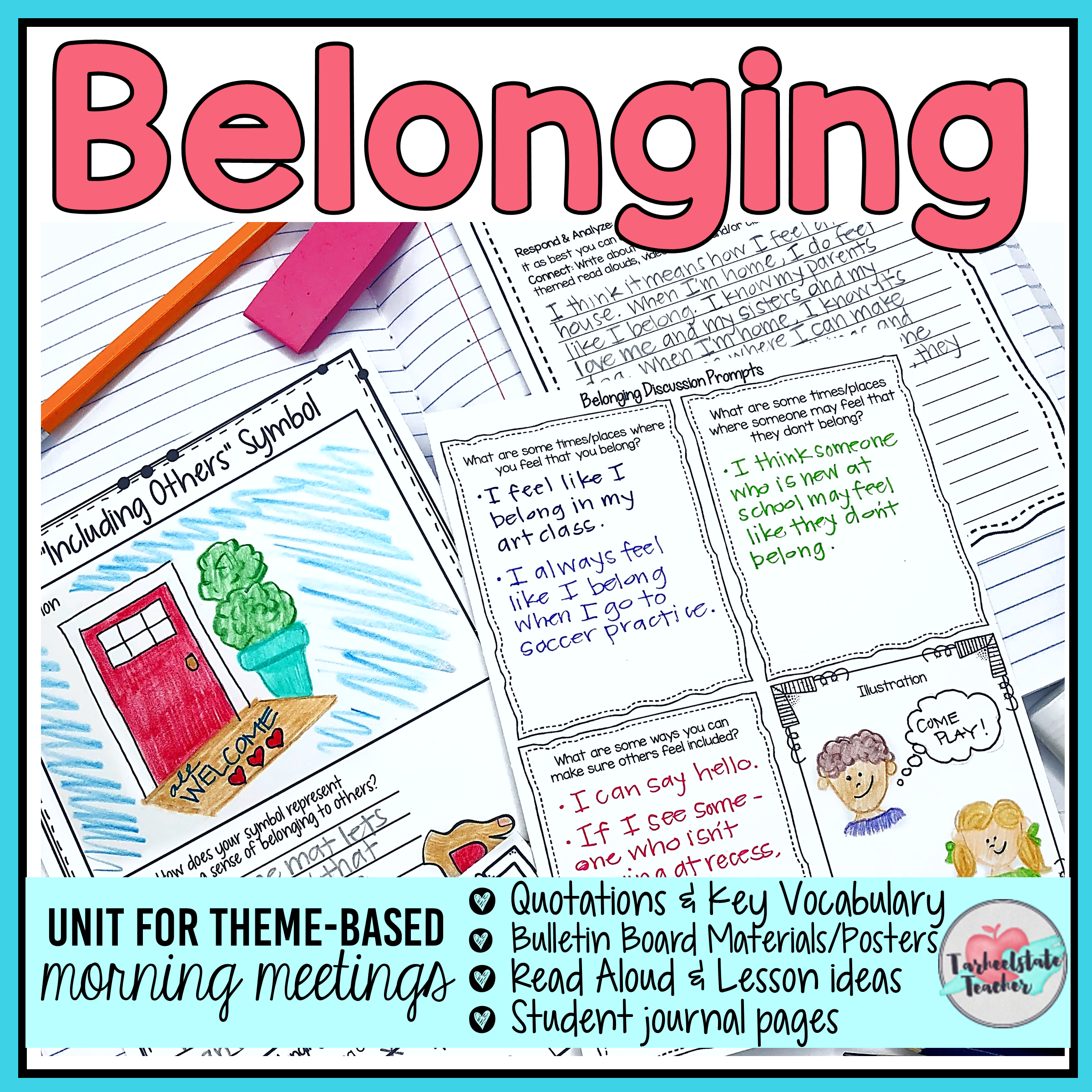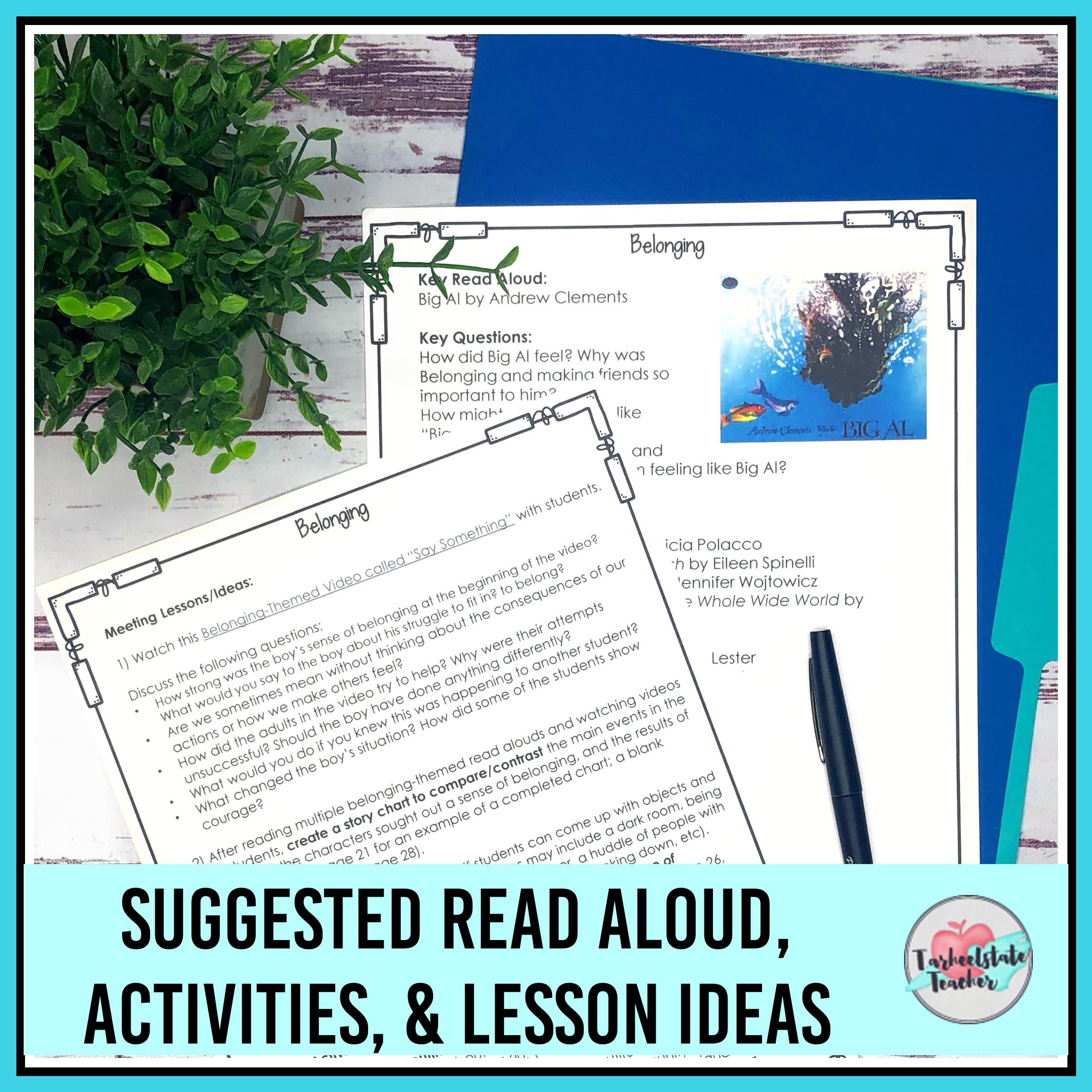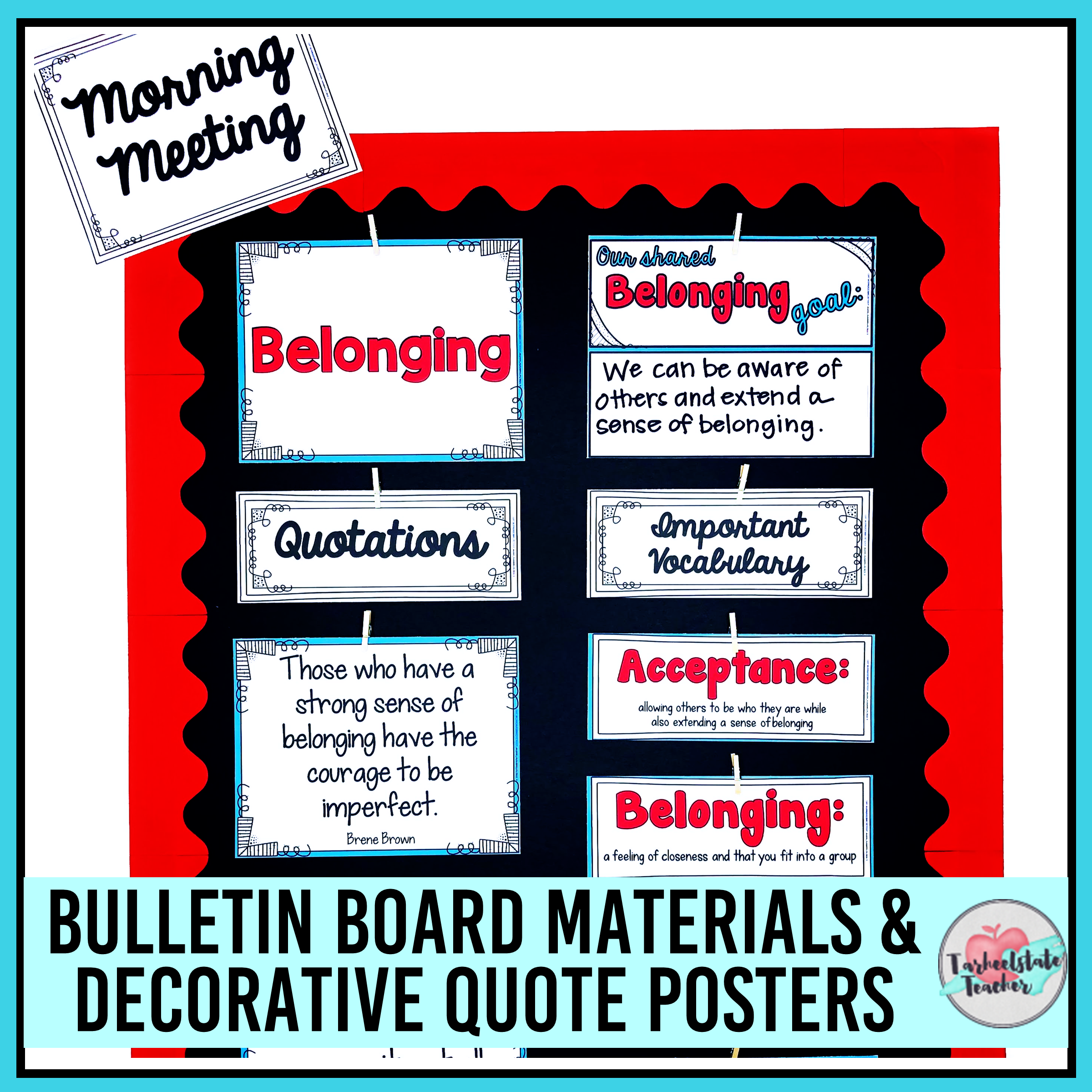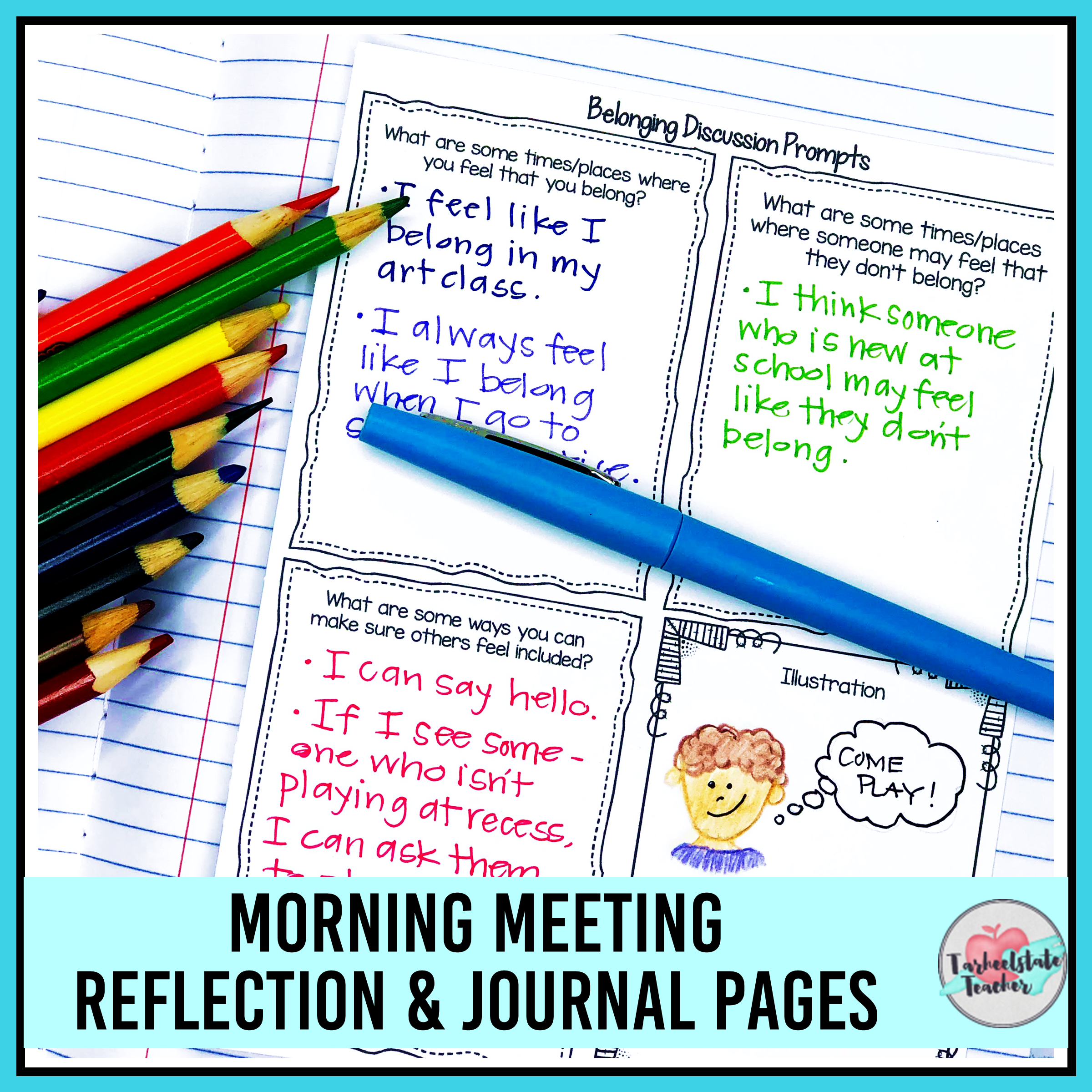Why 3rd-5th Grade Classrooms Need a Morning Meeting Routine
As a 4th grade and 5th grade classroom teacher, I love the time I chisel out for morning meetings. During this routine part of our day, I get to make an impact on my students’ lives and provide them with tools to help them develop personally, academically, and socially. Morning Meeting allows me to fill the classroom with a positive outlook and set the tone for the day, the week, and our year together. When I look back on the time spent with my students in morning meetings, I feel that I’ve truly had the opportunity to make an impact on my students and my little part of the world, which is the primary reason I became a teacher. Today, I’m sharing the biggest reasons I devote time to morning meetings!
Perhaps you already implement a Morning Meeting or Classroom Meeting routine, but are looking for some new ideas. Maybe you are just now considering adding a morning meeting to your schedule or want to learn more about them. You may be like I was a few years ago and looking for something to help you take your upper-grades’ morning meetings to the next level. Whatever your experience with classroom meetings and your desire to learn more, you have come to the right place!
In my previous blog post, I shared my morning meeting model. My morning meetings are a routine classroom experience that allows students the opportunity to develop personally, academically, and socially. I incorporate self-reflection and goal setting, picture book read alouds, songs, short videos, quotations, key vocabulary, and classroom discussions. I believe the role of the teacher as a guide is key to the success of morning meetings that focus on social and emotional development.
WHY SHOULD UPPER ELEMENTARY CLASSROOMS HAVE MORNING MEETINGS?
1) MORNING MEETING SETS THE TONE FOR THE DAY
Morning Meeting allows me to set the tone for my classroom as we establish our community at the beginning of the year. Through read alouds and discussions, I convey that including others is an expectation, I provide students with tools for dealing with conflict, we reflect on our progress and set goals, and I encourage them to develop compassion and practice kindness.
2) ALLOWS STUDENTS TO BOND WITH ONE ANOTHER
Morning Meetings allow students to bond and hear one another’s feelings. As students open up to one another during reflections and discussions, we have the opportunity to develop empathy and see our classmates in new ways. It often changes our perspective on a person when he/she shares their feelings and experiences with us.
3) PROVIDES AN OUTLET FOR DISCUSSING BEHAVIOR AND FRUSTRATIONS WITHIN THE CLASSROOM ROUTINE
A Morning Meeting that is routinely built into my schedule gives students and myself the opportunity to discuss and problem-solve any issues we’ve been having in the classroom, at lunch, in special-area classes, or at recess. Meeting discussions can also reveal student concerns that I may not have been aware of prior to students’ discussions. When classroom issues bubble up, I don’t have to find time outside of my schedule to address them. While I can’t prevent every single issue from interrupting other parts of our day, some issues can surely wait until morning meeting time to discuss in more detail.
If you are interested in going deeper into how you can problem-solve classroom issues during morning meeting, check out “Using Morning Meeting to Problem-Solve Behavior and Other Classroom Issues “or “Students Misbehaving? 5 Steps for Improving Classroom Behavior”
4) PROVIDES A CONSISTENT OPPORTUNITY TO RESPOND TO STUDENTS’ SOCIAL & EMOTIONAL NEEDS
With a dedicated routine focused on community building and students’ personal development, I am able to respond to students’ needs as they arise. While I have an outline for the sequence of my morning meeting themes (starting with belonging, kindness, compassion, conflict, and perseverance) and I plan to spend around two weeks on each theme, I can pivot when students need me to. If students show me that we need to discuss perseverance before we worry about talking about how to resolve conflicts or vice-versa, then I can move my theme units around. It is definitely beneficial for students to be exposed to all of the themes, but with the flexibility of this morning meeting routine, I can allow the temperament of my students and their personalities to guide the path of my morning meeting topics.
5) PROVIDES A PLATFORM FOR PERSONAL GOAL SETTING AND SELF-REFLECTION
If you’ve always felt that goal setting was important but that it was a challenge to fit into your classroom schedule, well, this point is for you! At the launch of each of my morning meeting theme units, students complete a quick self-assessment and set a personal goal based on their reflection. We also identify a global classroom goal that we can all work towards. By having students reflect on their personal attitudes and behaviors in relation to each theme, I am able to assist students in identifying their strengths and weaknesses. Through our discussions, we are able to help one another develop strategies and skills that will help us achieve our goals. By writing our goals down, sharing them aloud, and returning to them to evaluate our progress, we hold one another accountable.
During my 2nd year of teaching (when I was swimming a little more than I was drowning), I became perplexed by the fact that we (teachers and students) are immersed in an environment where personal goal setting and motivation are critical factors in how successful our students will be, but that students were not often involved in the goal setting process. Morning meeting (along with quite a few other strategies) became a consistent opportunity for me to develop students’ goal setting abilities.
6) CAN SUPPORT THE STANDARDS YOU HAVE TO TEACH
While my goals for implementing morning meetings lean more towards developing my students’ social and emotional skills and the strong bonds of our classroom community, morning meetings can also help enhance the standards you are required to teach. With the theme-based morning meeting model, we are able to hit many of our literacy standards—including discussion skills, themes in literature, author’s purpose, text to text connections, using text-based evidence, character traits and character development, and so much more. So much of what you do during morning meetings will be justified by your literacy standards. I’ll be sure to write a whole blog post on this very soon, but one look at your literacy standards, and I’m sure you’ll find some that you can incorporate and teach through theme-based morning meetings.
7) HELPS MAINTAIN THE COMMUNITY LONG-TERM
My Students Need Morning Meetings! As we get into the school year and seem to have less and less time for all that we need to accomplish, there have been times when I have dropped my morning meeting routine. Issues quickly begin to arise with student interactions and relationships. Someone is being rude or bossy on the playground. Lunch time is not as enjoyable as it should be. The special-area teachers are reporting that my students are having difficulty getting along. Or, I hear the way students are talking to one another in the classroom and it concerns me. When this happens, I ask myself, “What is going on with my students? I thought they knew how to treat one another.” If I have squeezed out our time for morning meetings and my students are behaving poorly, I know that our classroom community is suffering.
IDENTIFY YOUR OWN MORNING MEETING “WHY”
MY MOST IMPORTANT WHY: STUDENTS NEED A CONSISTENT SOCIAL-EMOTIONAL ROUTINE
Morning Meeting is important to my mission as a teacher.
While I have shared with you the reasons that I'm dedicated to having classroom meetings, the most important reason for me is simply that my students need this opportunity for personal development, and I cannot just hope that teachers in the future have these conversations with my students.
It's my responsibility to teach my students about belonging, kindness, compassion, goal setting, dealing with conflict, etc. all year long, not just at the beginning of the year.
WHAT ABOUT FINDING THE TIME FOR MORNING MEETINGS?
Scheduling and finding time can be an issue for any classroom endeavor, but I find having enough time to be an issue no matter the subject area. I want to do so much with my students! Morning meeting is one of my "no matter what" routines. In a future blog post, I'm going to give you some ideas for problem-solving your morning meeting schedule and ways that you can be creative with time as you implement classroom meetings. For now, just know that 15-20 minutes is long enough and that 2-3 days a week still makes an impact if you can’t have them every day!
DOWNLOAD YOUR FIRST MORNING MEETING UNIT FREE!
This free theme unit is packed with lesson ideas, student journal pages, discussion prompts, self-reflections, bulletin board materials, and more. YES! Everything you see below for the belonging theme is FREE!
If you need resources for virtual morning meetings or remote learning, I’ve got you covered with Google Slides versions of each theme set. Grab your FREE slides for belonging here.
Those of you that already incorporate a morning meeting, I’d love to know your “why”. Please share in the comments!












